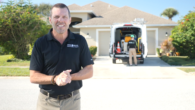Guide for Algae & Moss Removal on Your Roof
July 22, 2020
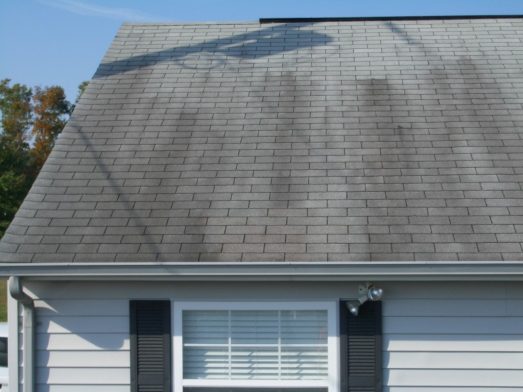
If you live in the South, Midwest, or another region with warm, humid summers, you may notice stains and streaks showing up on your asphalt shingles. These stains look a lot like mold—but in fact, much of this is actually blue-green algae (Gloeocapsa magma). And in some cases, what looks like mold might be moss, requiring roof moss removal.
Understanding the difference between mold, moss, and algae is crucial. While moss removal from the roof is essential for maintaining a roof's integrity, algae is often an eyesore that warrants removal, and mold (although not as common) is a dangerous health hazard that can lead to severe health issues, including asthma and headaches.
It’s time to accurately identify what is growing on your roof, and take prompt action. Let’s start by identifying what exactly is on your roof.
Dark Streaks: Roof Algae
You may have noticed dark streaks across your roof. When distinguishing between moss and algae, remember that moss tends to grow upright while algae remain flat against the surface. So, if you notice dark streaks on the roof, it’s likely algae.
Algae is common in many parts of the United States, and often starts its life cycle as airborne spores transported by wind, birds, or varmints before settling on the roof. They are typically aquatic and lack the roots, stems, and leaves of other plants, though they still contain chlorophyll—the green pigments found in most plants. However, they are not plants but rather organisms also spread by spores, much like moss.
The northern exposure of roofs offers the most chance for algae to flourish because that part of the roof is exposed to the least UV and dries last after morning dew and rain.
As the algae grows and spreads, it begins to look like large black streaks on your shingles. It’s not always easy to identify, let alone remove. However, its removal is necessary if you want to maintain your home’s aesthetic appeal.
Green, Fuzzy Spots: Moss
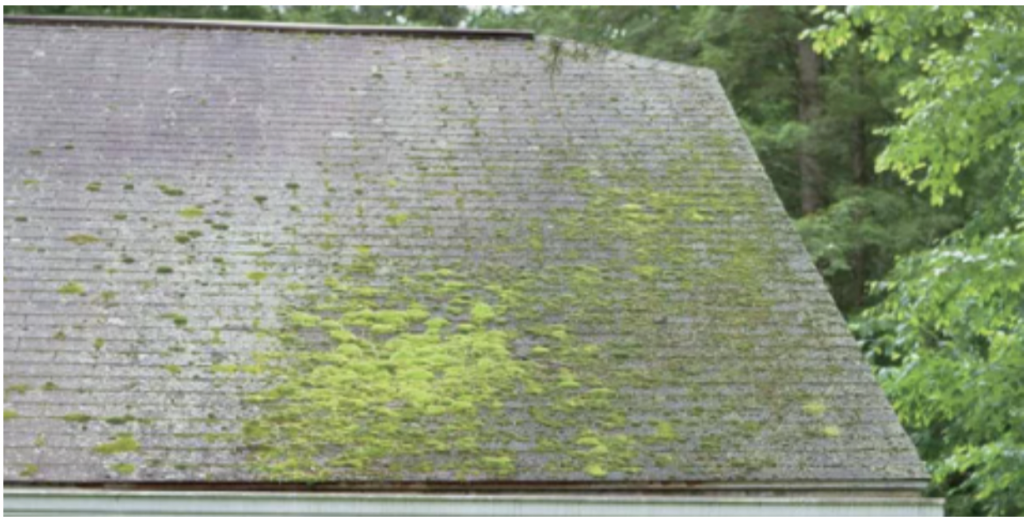
If you notice a green fuzzy growth on your roof, it is most likely moss. Moss loves cool, damp environments. If you have moss on your roof, it will be commonly found on the north slopes in addition to overhanging trees or overhanging sections of the roof, causing shade and allowing moisture to hang around and the moss to grow.
Though they might be grouped as the same thing because they grow in the same area of your home, moss, and algae are actually quite different and distinct.
Interestingly, the growth conditions for both moss and algae are quite similar—they thrive in damp and shaded areas. But while moss can directly harm the physical structure of your roof by lifting shingles and retaining moisture, algae's primary damage is cosmetic.
Moss always appears more green and fluffy-looking than algae, though it might appear browner during dryer seasons. Moss will also grow up off the roof, while algae will grow flush to the shingles and fixtures, staying flat and unobtrusive.
Moss spores, like algae, can reach roofs through wind, birds, squirrels, and other small animals. Once the moss spores land on a roof, they will gather in the spaces between shingles and eventually grow into thick, spongy moss.
A small amount of moss is relatively harmless but left unattended, it can grow and eventually damage your asphalt shingles. Roof moss removal is necessary to prevent structural damage.
Slimy Fungus: Mold
Mold is the result of algae left too long on a roof. Algae needs perpetual moisture to exist, so they grow best in humid areas. When algae keeps the roof damp for long enough, rot can set in, commonly leading to mold growing and spreading. Mold looks a lot like algae, but tends to be slimy with noticeable growth on/above the stain itself.
We do not recommend DIY removal for large amounts of mold, because of the aforementioned health hazards to you and yours. Check out the step-by-step guide below to tackle small sections of mold.
A Cleaning Guide for Mold, Algae, & Moss from your Roof
To reemphasize, we don't recommend trying to handle sizable roof algae, moss, or mold removals on your own. We recommend hiring a professional who can be your roof algae guide.
If you are a DIY person capable of climbing a ladder and not afraid of heights, you may be able to tackle algae or moss removal yourself.
The safest method for your roof and the environment is to use a product called Spray and Forget or Wet and Forget. These products can be purchased at most local hardware stores, can be put into a hose-end sprayer, and applied in many cases from the ground or a ladder or the edge of the gutter. These methods can take 3-6 months to work but are the safest. Take some time to research these products before use.
Another more aggressive method for quicker results is the use of water and bleach. Below are the general steps for this method:
- Mix 1 part oxygen bleach cleaner with 1 part water. (Add ½ cup per gallon of trisodium phosphate for a stronger cleaning solution.)
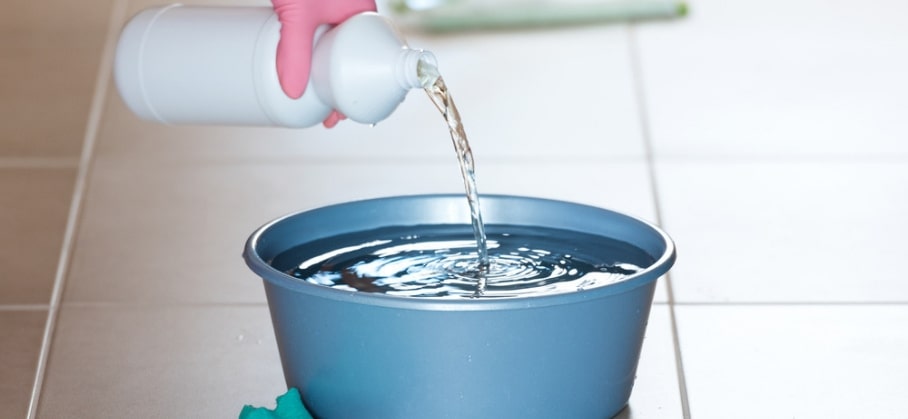
- Pour the bucket of solution onto the affected area of the roof and let it soak for 30 minutes.
- For larger sections affected by algae or moss you could put this solution into a spray pump and apply. Be extremely careful not to step on wet algae or moss as it is very slippery and could cause a slip and fall!
- Be patient. Allow the mixture to sit for approximately 30 minutes. During this time, the chemicals are killing the algae and moss and loosening its hold on your roof. Take precautions as this mixture can run off your roof and into your garden below so before you spray, cover any plants you wish to keep alive and rinse/wet everything down this solution may come in contact with.
- After 30 minutes, rinse the mixture off with your hose on a low-pressure setting. NEVER PRESSURE WASH YOUR ROOF. The moss won't come off your roof immediately, but within a few days, it will dry up and blow off with the wind. If your roof is pretty well-covered in moss, you might need to use a leaf blower to get rid of the remains. If you do use a leaf blower, never blow up against the bottom edge of the shingles, as you can break the seal tabs. Always blow from the peak down toward the gutter/eave.
Being up on your roof and tackling this kind of problem can lead to more issues and even put you in danger. So, while clearing away your roof of moss or algae can be done on your own, we don't recommend it. We recommend hiring a professional who knows exactly how to remove these unwanted organisms/plants safely and effectively.
Tips to Prevent Roof Algae & Moss
Roof algae and moss usually grow because of moisture and bacterial growth. You can stop that growth from ever starting in the first place, effectively making your roof last longer. Here are a few ways to prevent future growth once you have gotten rid of moss and algae:
- Trim trees near the home: Overgrown trees often spread bacteria onto the roof and cause algae growth. Make sure to plant trees far enough away from the house and trim them back regularly so they aren’t hanging over the roof.
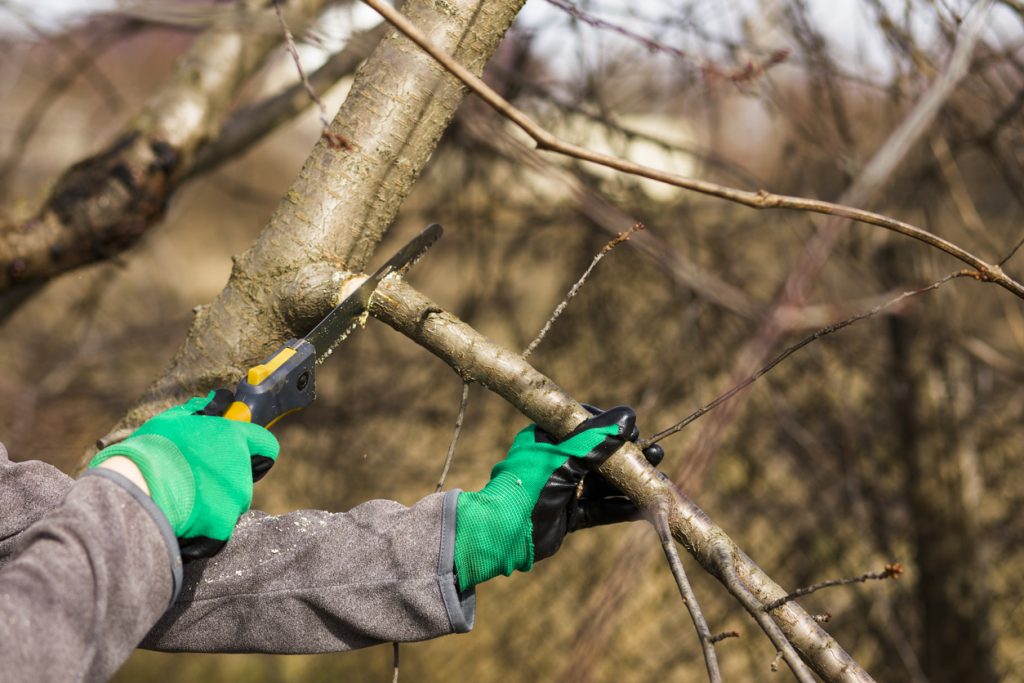
- Get rid of standing water: Standing water is another factor that can contribute to mold and algae growth. Minimize standing water on the roof by fixing shingles, cleaning gutters, and performing small roof repairs as necessary.
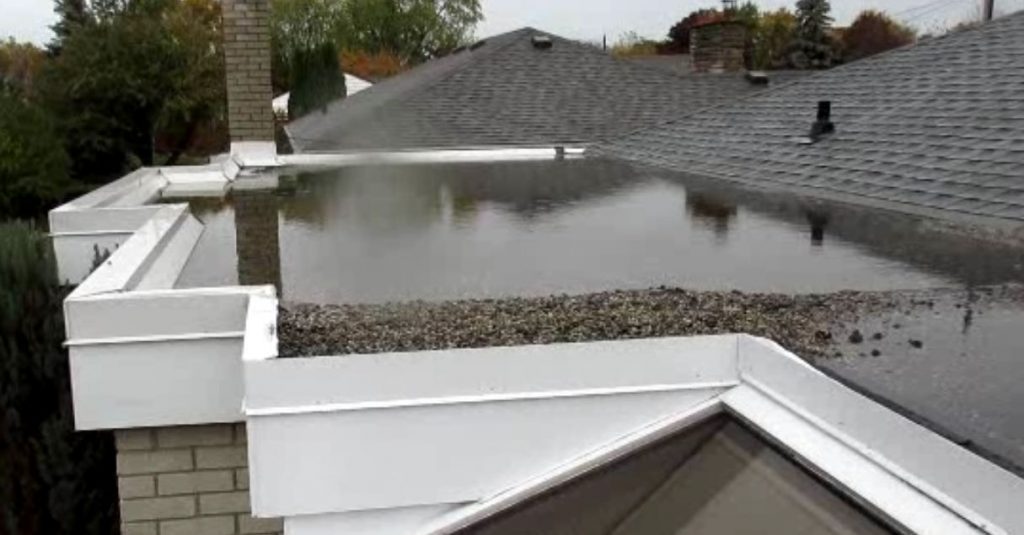
Stop Roof Algae from Coming Back
Once you’ve removed the algae from your roof and worked hard to reduce mitigating factors like trimming trees and eliminating standing water, you sure don’t want the algae to come back. As a roof algae guide, you can use certain metals to prevent algae growth.
Zinc or copper flashing is a great way to prevent algae growth, and you can install it around chimneys and vents. Still, the most effective way to prevent algae from covering your roof is to install a strip of zinc or copper a few inches wide under the row of shingles adjacent to the roof’s peak.
When it rains, these metals release molecules that cascade down your shingles, effectively killing off any algae. While copper and zinc come at a premium compared to materials like stainless steel or aluminum, the long-term benefits—extending the durability and lifespan of your shingles—justify the investment. This not only ensures a clean roof but also increases its longevity.
How to Make Your Roof Last Long
Moss and algae growth, if left unchecked, will shorten the lifespan of your roof. In fact, there are several things you can do to extend the life of your roof, most of which involve keeping it clean and clear of debris and growth, such as:
All of these suggestions revolve around the similar idea that keeping things clean and organized will ultimately keep your roof lasting longer. Roof moss removal and algae removal will also certainly keep your roof functioning properly for a longer period. Take a look at some of the following tips to help prevent growth.
Contact Roof Maxx
For a roof inspection you can trust and another way to extend the life of your roof, contact us at Roof Maxx. We can apply our sustainable, affordable treatment to add up to 15 years to the life of your roof. Some, but not all, of our dealers offer a roof cleaning service.
FAQs on Roof Moss Removal
What is the best way to remove moss from a roof?
To remove moss from the roof, follow these three steps:
- Start the task by using a soft brush to gently scrub away the moss, working downwards to keep from lifting the shingles.
- Apply a moss remover or a solution of equal parts water and bleach to tackle stubborn areas, then let it sit for 30 minutes before rinsing.
- For safety, use a sturdy ladder and a harness to make your way onto the roof.
For extensive growth or hard-to-reach areas, consider hiring a professional who knows exactly how to remove moss from the roof safely and effectively.
Is it okay to scrape moss off the roof?
If you plan on scraping moss off your roof, you must be careful as you risk damaging the tile or shingles. Using a soft brush and working downward can minimize potential damage. However, most homeowners lack the proper technique for roof moss removal, so it’s best to leave the job to a professional.
What kills moss on the roof naturally?
A mixture of equal parts water and distilled white vinegar can effectively kill roof moss. Spray this solution onto the moss and let it sit for up to 30 minutes, then rinse with water and gently scrub away the moss.
Another natural method involves baking soda: sprinkle it over the mossy areas and rinse after a few days. Both approaches offer eco-friendly options.
What kills moss permanently?
A combination of physical removal and chemical treatments is most effective. Begin by gently scraping away the moss. Then, apply a moss killer, such as ferrous sulfate or a commercial moss remover.
It's best to address the root causes, like excess moisture or shade. Ensure proper drainage, trim overhanging branches, and consider installing zinc or copper strips on rooftops. You’ll still need to do regular maintenance and periodic checks to ensure the moss doesn’t return.
What’s the best season to remove moss from the roof?
Late spring or early summer is ideal for roof moss removal. The dry, mild weather not only ensures a safer rooftop work environment but also makes spotting and treating the moss easier than in other seasons.








